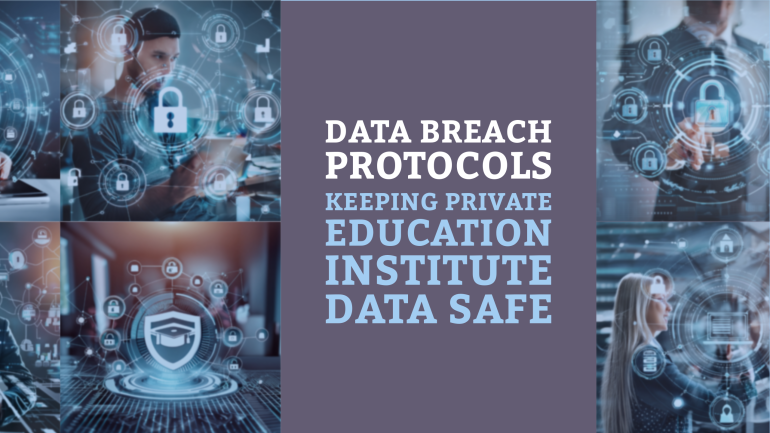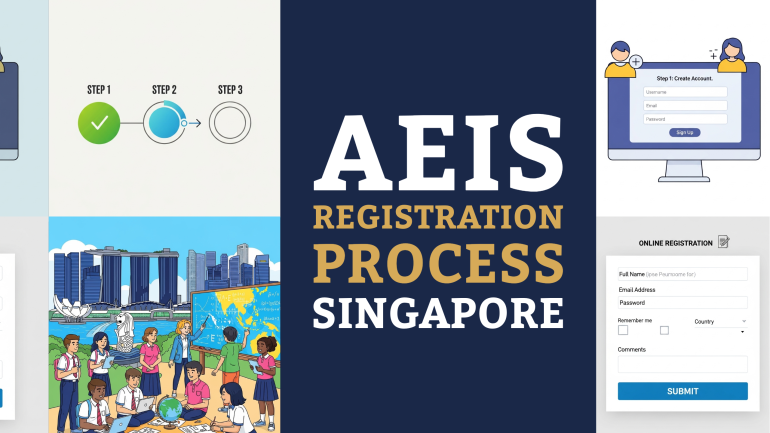Table of Contents
TL;DR: Data Breach Protocols: Keeping Private Education Institute Data Safe
- Incident Response Plan: Having a comprehensive incident response plan in place is crucial to minimize the impact of a data breach. This plan should outline the procedures to be followed in the event of a breach, including notification, containment, and remediation.
- Employee Education and Awareness: Educating employees on data breach protocols and the importance of data privacy is important to prevent breaches. Employees should be trained to identify and report suspicious activity, and to follow best practices for handling sensitive data.
- Data Encryption and Access Control: Implementing robust data encryption and access control measures can help prevent unauthorized access to sensitive data. This includes encrypting data both in transit and at rest, as well as implementing role-based access control and multi-factor authentication.
- Compliance with Data Protection Regulations: Private education institutes must comply with relevant data protection regulations, such as FERPA and GDPR. This includes implementing appropriate technical and organizational measures to protect personal data, and being transparent about data collection and use practices.
As a private education institute, you hold sensitive information about your students, faculty, and staff, making data security a top priority. With the increasing number of cyber-attacks and data breaches, it’s no longer a question of if, but when your institution will be targeted. Having a robust data breach protocol in place is crucial to minimizing the impact of a breach and protecting your reputation. In this post, you’ll learn how to develop a comprehensive protocol to detect, respond to, and contain a data breach, ensuring the confidentiality, integrity, and availability of your sensitive data.
Understanding Data Breaches
While private education institutes handle sensitive information about students, staff, and faculty, they are not immune to data breaches. In fact, educational institutions are increasingly becoming targets for cyber attacks, making it crucial to understand the risks and consequences of data breaches.
As you investigate into the world of data breach protocols, it’s crucial to recognize the various types of breaches that can occur in educational institutes.
Types of Data Breaches in Educational Institutes
You may encounter the following types of data breaches:
- Unauthorized Access: When an unauthorized individual gains access to sensitive information, such as student records or financial data.
- Malware Attacks: When malicious software is used to steal or compromise sensitive data.
- Phishing Scams: When attackers use deceptive emails or messages to trick individuals into revealing sensitive information.
- Lost or Stolen Devices: When devices containing sensitive data are lost or stolen, putting the information at risk.
- Insider Threats: When authorized individuals intentionally or unintentionally compromise sensitive data.
On average, it takes around 206 days to detect a data breach, and 73 days to contain it. Recognizing the types of breaches that can occur is crucial in developing effective data breach protocols.
| Type of Breach | Description |
| Unauthorized Access | When an unauthorized individual gains access to sensitive information |
| Malware Attacks | When malicious software is used to steal or compromise sensitive data |
| Phishing Scams | When attackers use deceptive emails or messages to trick individuals into revealing sensitive information |
| Lost or Stolen Devices | When devices containing sensitive data are lost or stolen, putting the information at risk |
Potential Risks and Impacts of Data Breaches
Potential risks of data breaches in educational institutes include financial loss, reputational damage, and legal liability. When sensitive information falls into the wrong hands, it can lead to identity theft, financial fraud, and other malicious activities.
Risks of data breaches extend beyond financial loss, as they can also compromise the safety and security of students, staff, and faculty. Moreover, data breaches can lead to a loss of trust among stakeholders, damaging the reputation of your institution.
Severe consequences of data breaches can include legal action, regulatory fines, and even criminal charges. It’s crucial to understand the potential risks and impacts of data breaches to develop effective protocols for prevention, detection, and response.
Developing Data Breach Protocols
Now that you understand the importance of having a data breach protocol in place, it’s time to develop one tailored to your private education institute’s specific needs.
A well-crafted data breach protocol is crucial in ensuring that your institute responds promptly and effectively in the event of a breach. It’s vital to remember that a data breach protocol is not a one-time task, but rather an ongoing process that requires regular review and updates.
Essential Components of a Data Breach Protocol
For your data breach protocol to be effective, it must include certain vital components. You should identify the types of data that require protection, such as student records, financial information, and sensitive personal data. This will help you prioritize your response efforts in the event of a breach.
Your protocol should also outline the procedures for containing and mitigating the breach, including isolating affected systems, stopping unauthorized access, and notifying stakeholders. Additionally, you should establish a communication plan that includes notification procedures, public statements, and media relations.
Training Staff and Students on Data Security
Staff and students are often the weakest link in an institute’s data security chain. It’s vital to educate them on the importance of data security and their role in preventing breaches.
You should provide regular training sessions and workshops to ensure that staff and students understand the risks associated with data breaches and the measures they can take to prevent them. This includes educating them on password management, phishing scams, and the safe handling of sensitive data.
Security awareness training should be an ongoing process, with regular updates and reminders to ensure that staff and students remain vigilant. You should also consider implementing a incident response training program to ensure that staff know how to respond in the event of a breach. By empowering your staff and students with the knowledge and skills they need, you can significantly reduce the risk of a data breach occurring in the first place.
Implementing Security Measures
Once again, as a private education institute, it is crucial to prioritize the security of sensitive data. Implementing robust security measures is necessary to prevent data breaches and protect your students’, staff, and faculty members’ personal information.
Technical Safeguards for Data Protection
Protection of sensitive data begins with technical safeguards. You should implement robust firewalls, intrusion detection, and prevention systems to prevent unauthorized access to your network. Regularly update and patch your software and systems to prevent exploitation of known vulnerabilities. Additionally, encrypt sensitive data both in transit and at rest to ensure that even if a breach occurs, the data will be unreadable to unauthorized parties.
Moreover, implement access controls such as multi-factor authentication, role-based access, and least privilege access to limit who can access sensitive data. Conduct regular security audits and penetration testing to identify vulnerabilities and weaknesses in your systems.
Administrative and Physical Security Practices
Measures to protect data extend beyond technical safeguards. You should establish administrative and physical security practices to prevent unauthorized access to sensitive data.
Develop and implement policies and procedures for data handling, storage, and disposal. Ensure that all employees and staff members understand their roles and responsibilities in maintaining data security. Conduct regular training and awareness programs to educate employees on data security best practices.
This includes implementing physical security measures such as access controls, surveillance cameras, and secure storage facilities for sensitive data. Ensure that only authorized personnel have access to sensitive areas, and that all visitors are escorted and monitored.
Responding to Data Breaches
Unlike other crises, data breaches require swift and calculated action to mitigate the damage. As a private education institute, your response to a data breach will significantly impact the severity of the consequences.
Immediate Steps Following a Data Breach
One of the most critical aspects of responding to a data breach is acting quickly. You should have a pre-defined incident response plan in place, which outlines the steps to take in the event of a breach. This plan should include:
Identifying the source of the breach and containing it to prevent further damage. This may involve shutting down systems, disconnecting from the internet, or isolating affected areas. You should also immediately notify your IT team and relevant stakeholders, including law enforcement and regulatory bodies, as required.
In addition, you should begin gathering evidence and documenting everything related to the breach. This includes capturing system logs, network traffic, and any other relevant data. You should also preserve the integrity of the affected systems to prevent further tampering or destruction of evidence.
Long-Term Strategies to Prevent Future Breaches
One of the most effective ways to prevent future breaches is to conduct a thorough post-breach analysis. This involves identifying vulnerabilities, assessing the effectiveness of your incident response plan, and implementing changes to prevent similar breaches from occurring.
You should also implement additional security measures, such as multi-factor authentication, encryption, and regular security audits. Furthermore, employee education and awareness programs can help prevent breaches caused by human error.
The key to preventing future breaches is to stay proactive and vigilant. Regularly review and update your incident response plan, stay informed about emerging threats, and continuously monitor your systems for signs of suspicious activity. By taking these steps, you can significantly reduce the risk of future breaches and protect your institute’s sensitive data.
Final Words
The importance of implementing robust data breach protocols in private education institutes cannot be overstated. You have seen how a single breach can have far-reaching consequences, compromising the sensitive information of students, faculty, and staff. By understanding the risks and taking proactive measures, you can safeguard your institution’s reputation and maintain the trust of your community. Recall, a well-crafted data breach protocol is not a one-time task, but an ongoing process that requires regular review, updates, and training to ensure your defenses remain strong.
As you move forward in developing and refining your data breach protocols, keep in mind that it’s not just about compliance with regulations, but about demonstrating your commitment to protecting the privacy and security of your stakeholders. By prioritizing data security, you’re not only mitigating risks but also fostering a culture of accountability and transparency within your institution. You now have the knowledge and tools to create a robust data breach protocol that will help your private education institute stay ahead of potential threats and maintain the trust of your community. Stay vigilant, and remember that data security is an ongoing responsibility that requires your constant attention and dedication.
FAQ
Q: What is a data breach, and why is it a concern for private education institutes?
A: A data breach occurs when an unauthorized individual or entity gains access to sensitive information, such as student records, financial data, or personal identifiable information. This is a significant concern for private education institutes because they collect and store vast amounts of sensitive data, making them a prime target for cybercriminals. A data breach can lead to reputational damage, financial losses, and legal liabilities, ultimately affecting the trust and confidence of students, parents, and staff.
Q: What are the common causes of data breaches in private education institutes?
A: Data breaches in private education institutes can occur due to various reasons, including:
- Phishing attacks: Employees or students falling victim to phishing emails or messages that trick them into revealing login credentials or sensitive information.
- Weak passwords: Using easily guessable or default passwords that can be easily cracked by hackers.
- Unpatched software: Failing to update software and systems with the latest security patches, leaving vulnerabilities open to exploitation.
- Insider threats: Authorized personnel intentionally or unintentionally compromising data security.
- Lost or stolen devices: Unencrypted devices containing sensitive data being lost or stolen.
Q: What are the important components of a data breach protocol for private education institutes?
A: A comprehensive data breach protocol for private education institutes should include:
- Incident response plan: A clear plan outlining the steps to take in the event of a data breach, including containment, assessment, and notification.
- Data encryption: Encrypting sensitive data both in transit and at rest to protect it from unauthorized access.
- Access controls: Implementing robust access controls, including multi-factor authentication and role-based access, to limit data access to authorized personnel.
- Regular security audits: Conducting regular security audits to identify vulnerabilities and address them before they can be exploited.
- Employee training: Educating employees on data security best practices and the importance of confidentiality.
Q: How can private education institutes prevent data breaches?
A: To prevent data breaches, private education institutes can:
- Implement strong password policies and multi-factor authentication.
- Keep software and systems up-to-date with the latest security patches.
- Use reputable antivirus software and regularly scan for malware.
- Use encryption to protect sensitive data.
- Limit access to sensitive data and implement role-based access controls.
- Conduct regular security awareness training for employees and students.
Q: What should private education institutes do in the event of a data breach?
A: In the event of a data breach, private education institutes should:
- Immediately contain the breach to prevent further damage.
- Conduct a thorough investigation to determine the scope and cause of the breach.
- Notify affected individuals and regulatory bodies as required by law.
- Provide credit monitoring and identity theft protection services to affected individuals.
- Review and revise data breach protocols to prevent similar incidents in the future.





